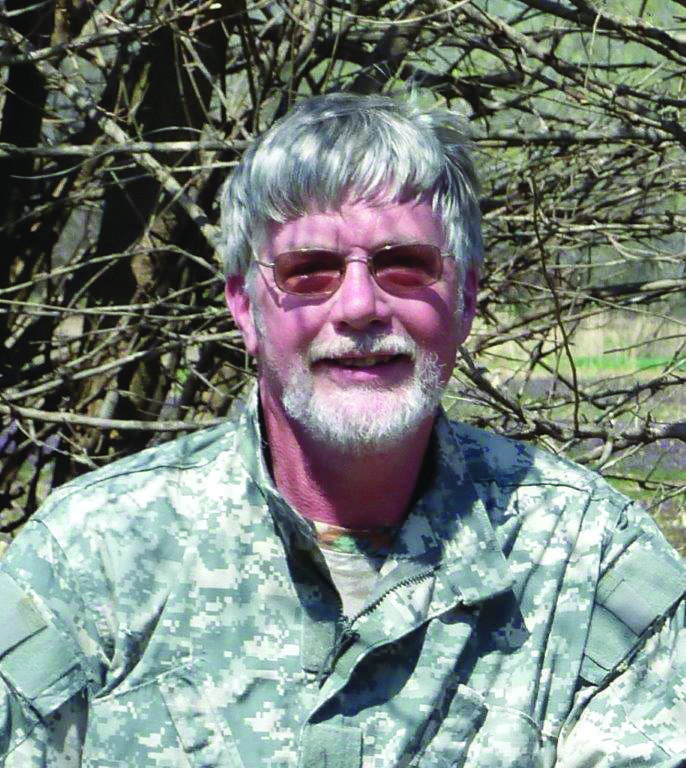By John Schlageck, Kansas Farm Bureau
Farmer stockmen possess a burning desire to care for their livestock. A few years back, I witnessed this dedication on a dairy in Franklin County.
It was a beautiful late spring morning in the country. A slight southwesterly wind rippled through the lush, tall pasture grass. Dark, green corn, standing approximately a foot above the contrasting taupe soil, waved ever so slightly in the breeze.
As I headed back toward my car after visiting with dairyman John Coen, I noticed several Holstein cows grazing contentedly on the grass less than 100 feet from his house.
As I continued up the sidewalk, I strained my eyes to see an electric fence that might be holding the cows in. I couldn’t see one.
“John, are those cows supposed to be out and grazing this close to your house?” I asked as I pointed to them.
“No, no they’re not,” he replied bolting from the house and running toward the southwest. “Gerald, what are the cows doing out?”
Gerald Anderson owned the dairy farm. Although retired, he helped John with the dairy operation nearly every day.
Mr. Anderson didn’t have an answer to the question but instead he headed toward the southwest where one group of cows was hoofing at a pretty good clip. John took off at a dead run toward the east.
By this time, the first herd of cows I’d noticed was headed up the dirt drive toward the mailbox east of the house. John caught up with them, turned them around and moved them back toward the milking station and the open gate.
“Go on,” he admonished the black and white gals as they moseyed toward the gate. “Get on home. You know the way.”
Once John locked the cows away, he headed south to help Mr. Anderson with the rest of the pesky herd. By this time, the retired dairyman was a good mile from the dairy facility, walking the Holstein cows toward the barn.
After we caught up with him, I asked Mr. Anderson if he thought the skunk might have spooked the cattle causing them to break through the gate.
He said probably not, and added he couldn’t smell much with his sniffer any more. The stench burned my eyes.
With the herd finally secure, Mr. Anderson, bent over, placed both of his hands on his knees and began massaging.
“I forgot about my knees,” he said.
“Your knees? “ I asked.
He explained that 50 years of bending – up and down over and over again – had taken its toll on his aging knees. Twice a day, seven days a week, four weeks a month, 12 months a year for 50 years amounts to countless hours and thousands of times bending and hooking up milking hoses to dairy cows’ udders.
Still, when Mr. Anderson heard John ask him about the escaped livestock, he thought only about bringing the cows home. He moved instinctively on those brittle, old knees. He didn’t even realize how they ached until the cows were safely locked up and he felt the pain for the first time.
For this veteran stockman the welfare of these dairy cows was the only thing that mattered.
He could have leaned against the barn and watched as the younger men rounded up the herd. He might have thought to himself, “No, this will be too hard on my knees. Let someone else do it.”
Call it dedication. Label it that Midwestern work ethic he grew up with and will take to his grave. Or simply refer to it as doing his job – the only one he’s known or cared about since growing up on his father’s dairy farm.
After all of these years, it’s still magical for him to see the cycle of life played out each year with dairy cows that give birth and provide milk that is used as an integral part of this country’s daily diet.
Mr. Anderson loves livestock. He understands that careful care of these animals is necessary to sustain him and his livelihood – even to the extent of placing their health and well-being ahead of his own.
“They’re only my old knees,” Mr. Anderson said. “They won’t hurt as much in a couple days.”
John Schlageck is a leading commentator on agriculture and rural Kansas. Born and raised on a diversified farm in northwestern Kansas, his writing reflects a lifetime of experience, knowledge and passion.
– See more at: http://www.kfb.org/news/insight/index.html#sthash.r99XRyOw.dpuf




